Abstract
Delayed hypersensitivity (DH) in the mouse was studied with complexes of dinitrophenyl (DHP) as hapten and bovine serum albumin (BSA), mouse immunoglobulin (MIg) and polyvinylpyrrolidone (PVP) as carrier. Priming with BSA induced strong DH against this carrier, but DN of decreasing strength against complexes with increasing DNP:carrier ratio. Priming with DNP-BSA complexes never resulted in a DH against BSA or DNP 3-minusBSA. Injections of DNP 16-minusBSA and DNP 28-minusBSA induced positive DH which increased with the hapten:carrier ratio of the eliciting antigen. The complexes with an isologous carrier DNP 48-minusMIg or DNP 90-minusMIg induced positive reactions against both complexes but not against the weakly substituted DNP 11-minusMIg. The latter only primed for itself. The importance of the DNP groups as determinant in these DH reactions is stressed by the cross-reactions between DNP-BSA and DNP-MIg complexes and by the induction by DNP 16-minusPVP of positive DH against DNP 28-minusBSA. Cyclophosphamide (Cy) treatment before priming with complexes induced enhanced DH against complexes with sufficient hapten:carrier ratio. Priming with carrier under Cy treatment induced no DH against complexes. All these results indicate that carrier determinants are not involved in the DH against complexes. After priming wtih complexes with a low hapten:carrier ratio the DH is directed against new antigenic determinants (NAD) groups. After priming with complexes with high ratios DH is directed against DNP groups. With adoptive local transfer of spleen cells of primed animals and pretreatment of these cells with anti-thymocyte serum or anti-plasma cell serum and complement it was possible to demonstrate that the T cell was responsible for the DH reactions. The involvement of different determinant groups on the hapten-carrier complexes in immune reactions is discussed.
Full text
PDF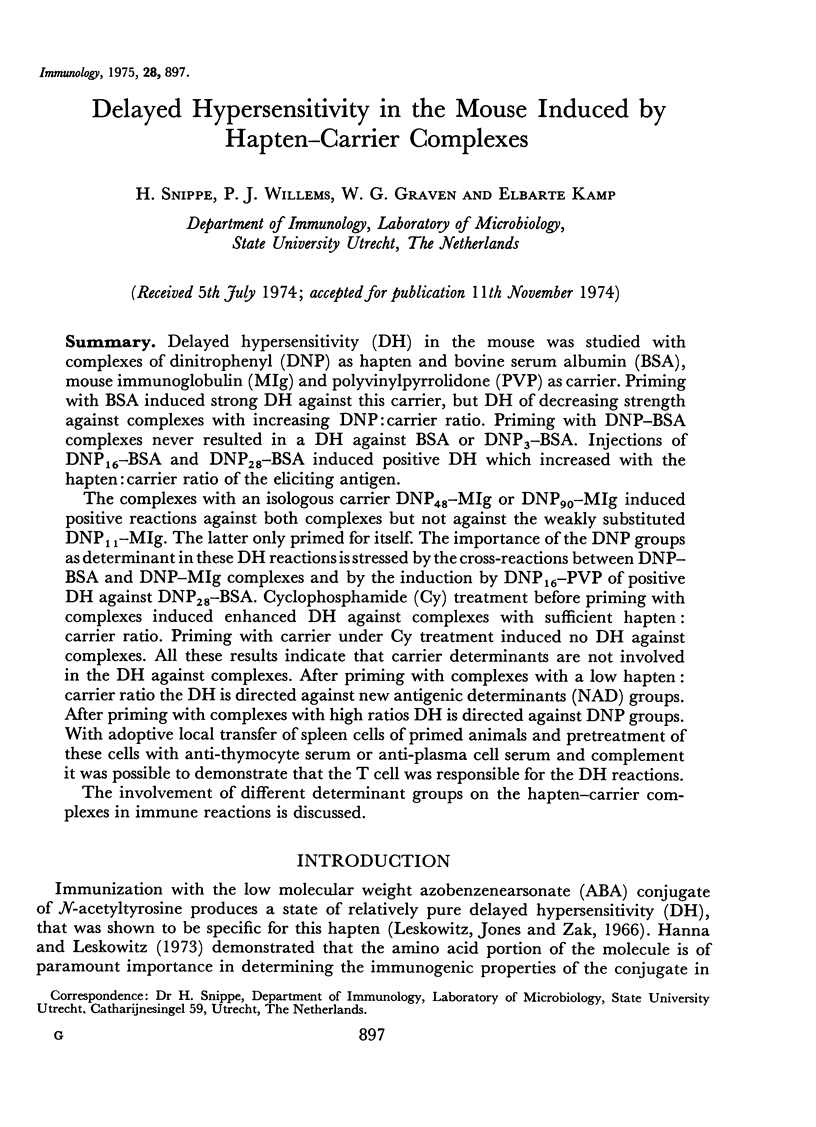
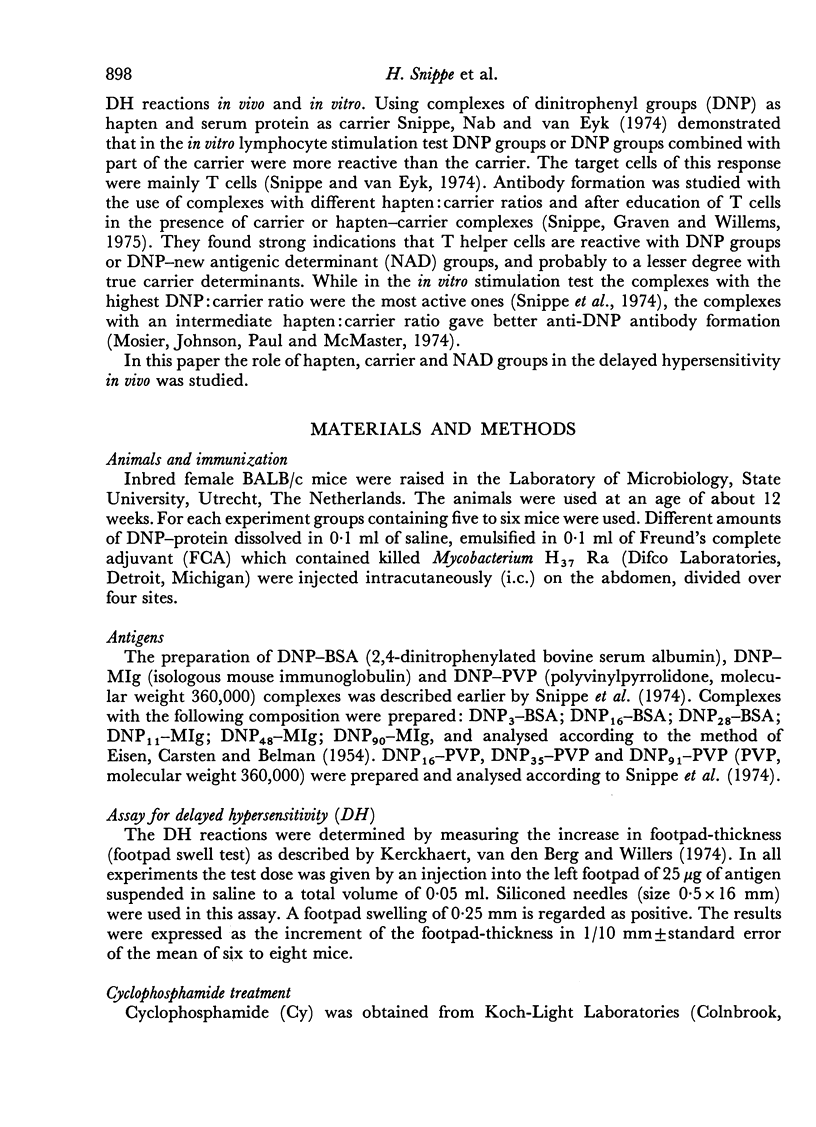
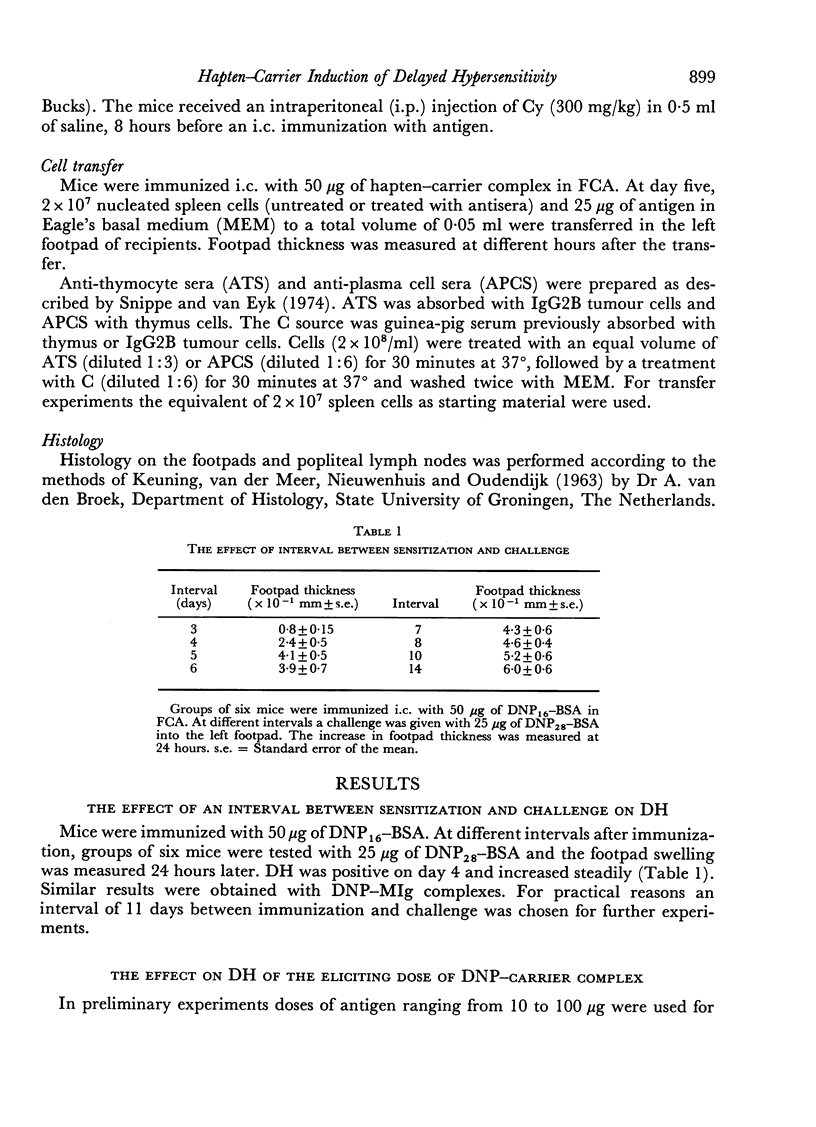
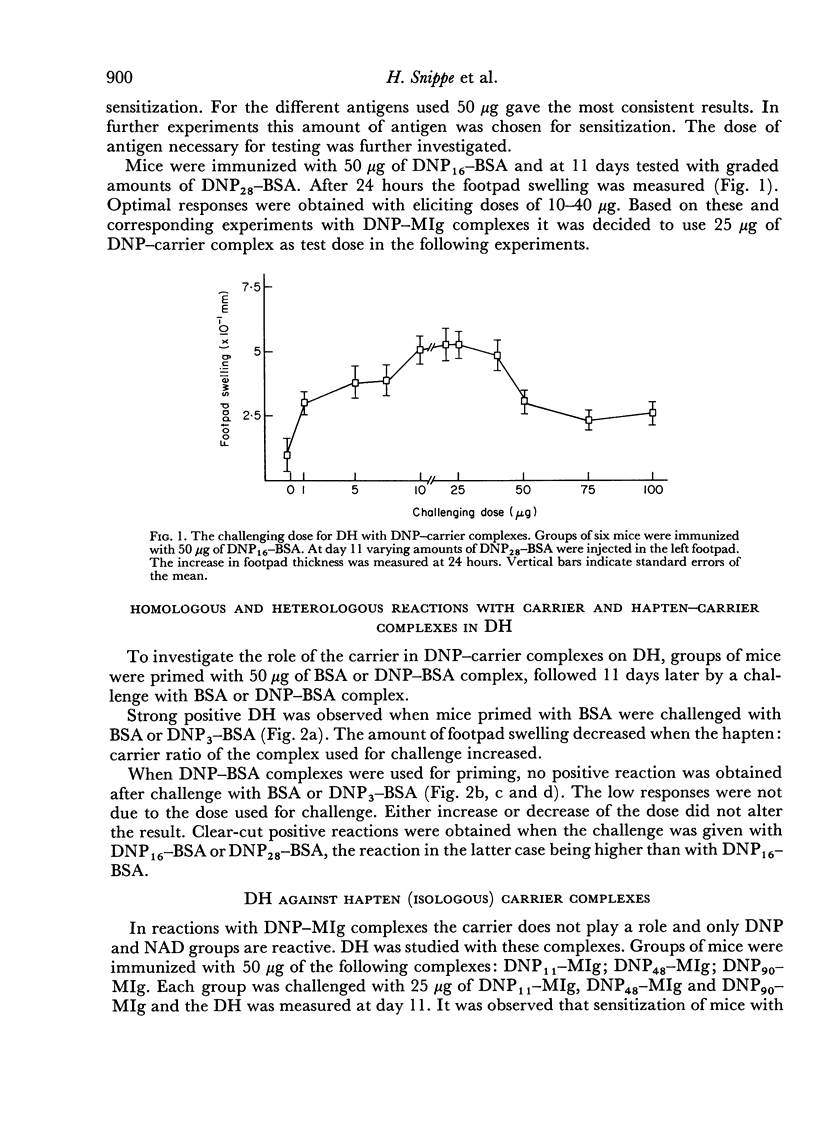
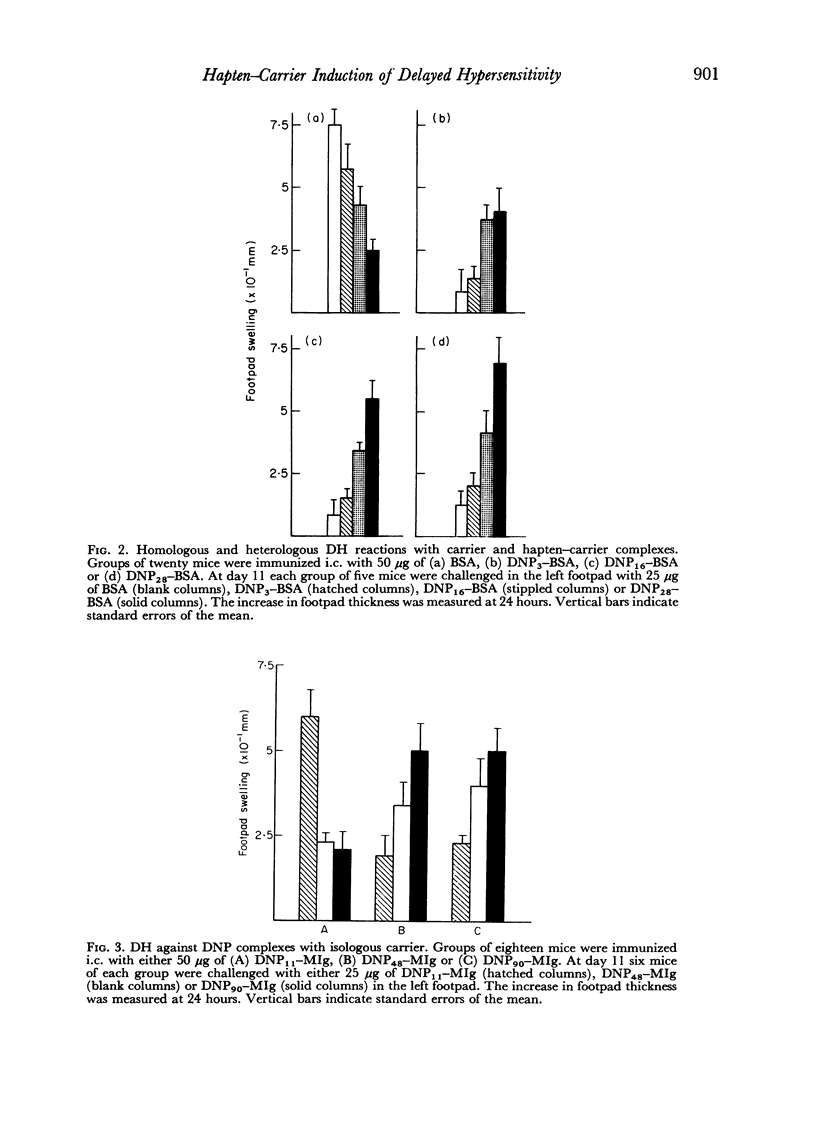
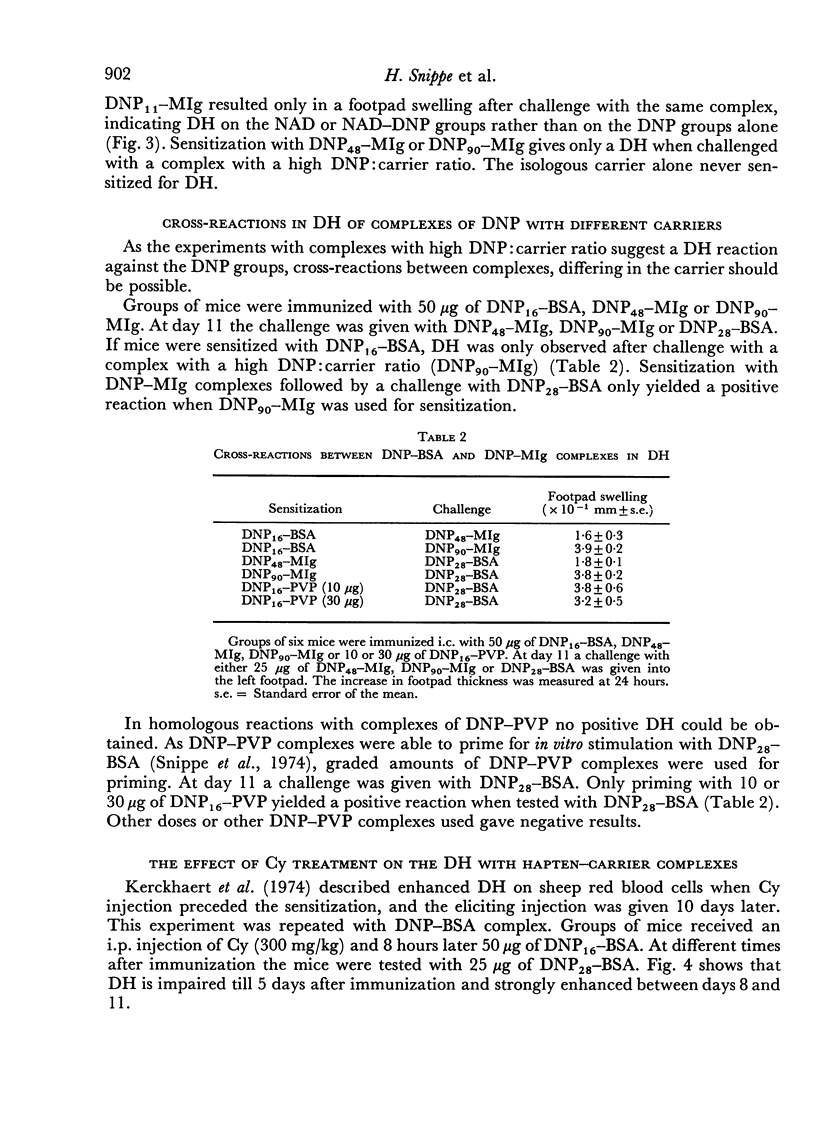
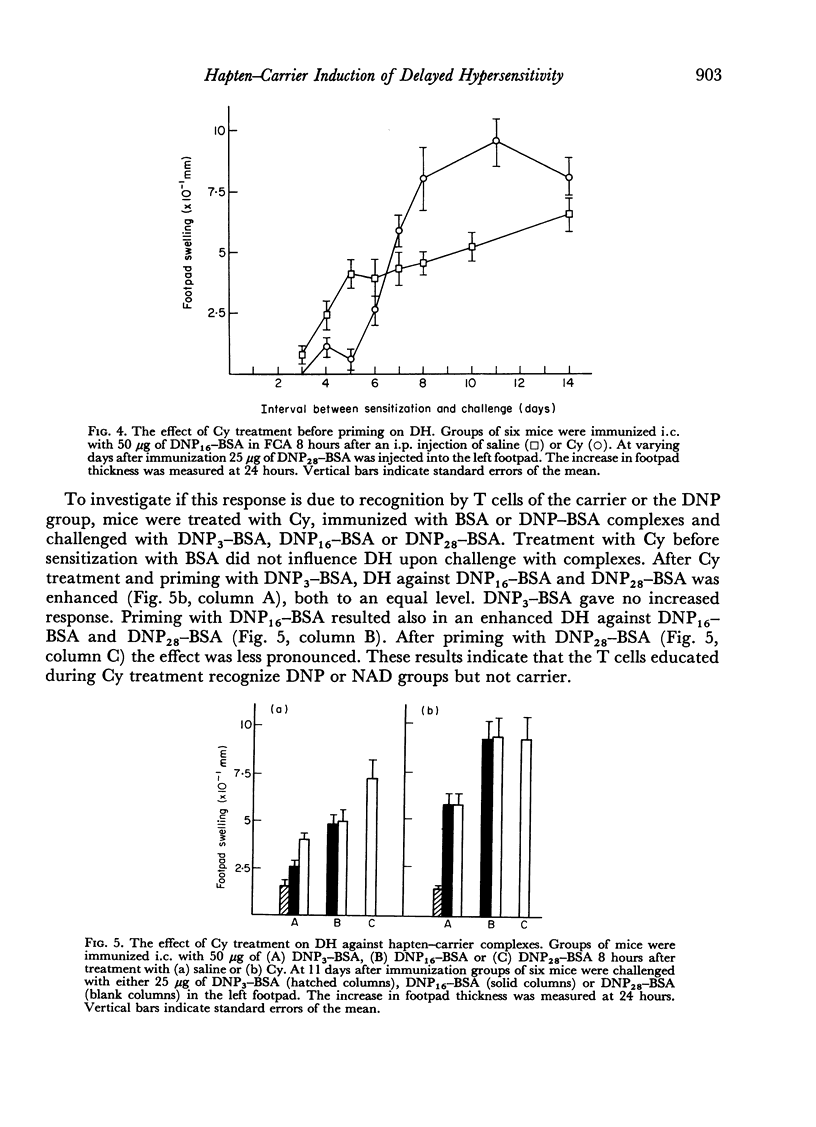
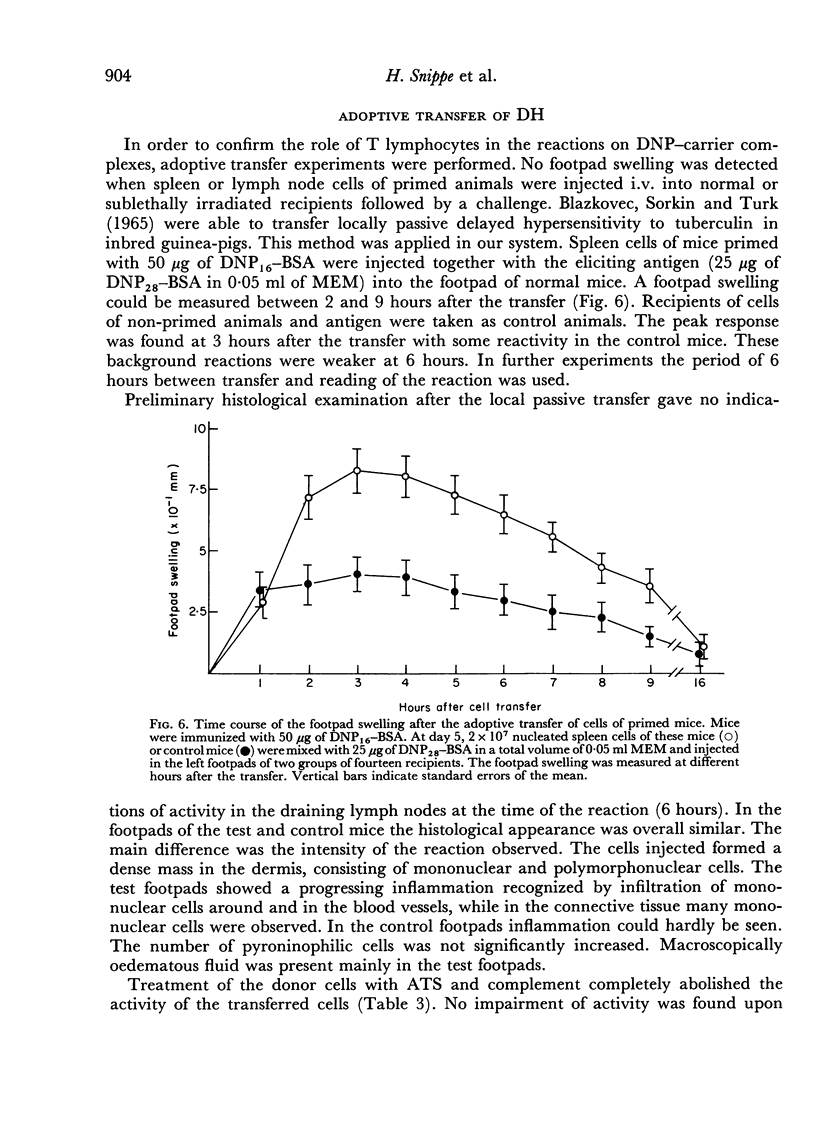
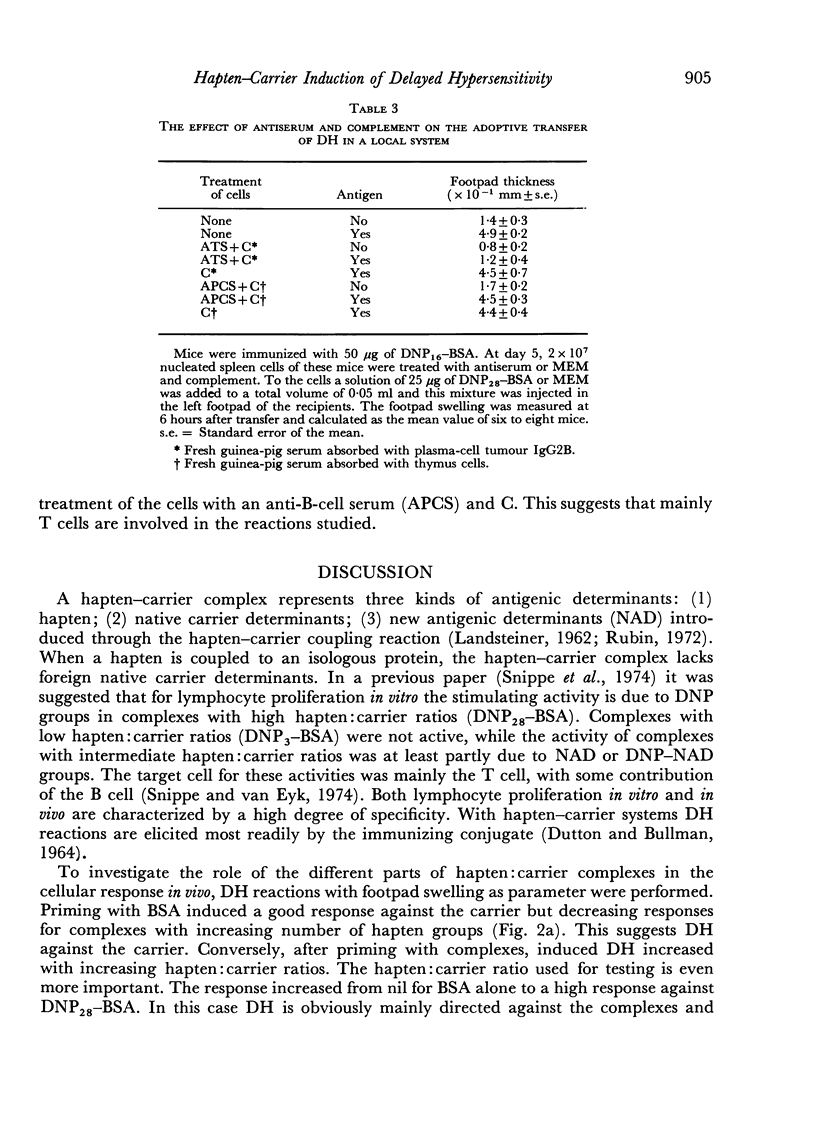
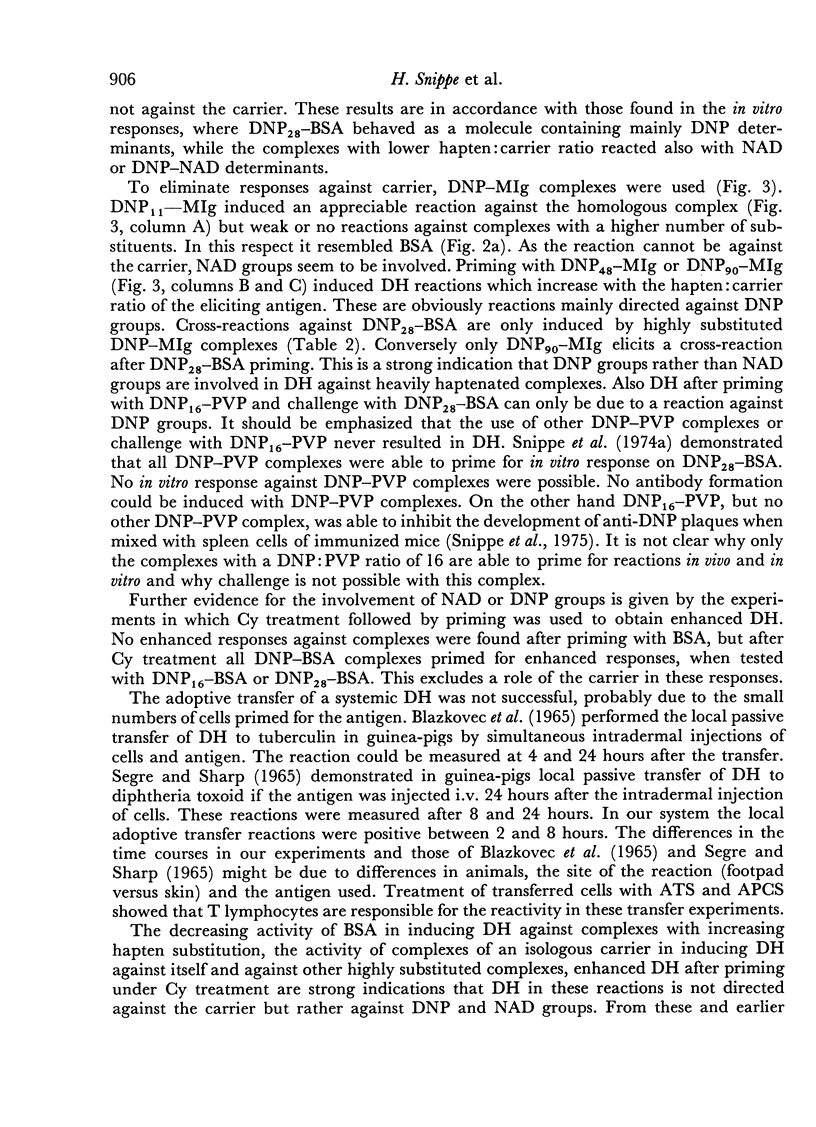
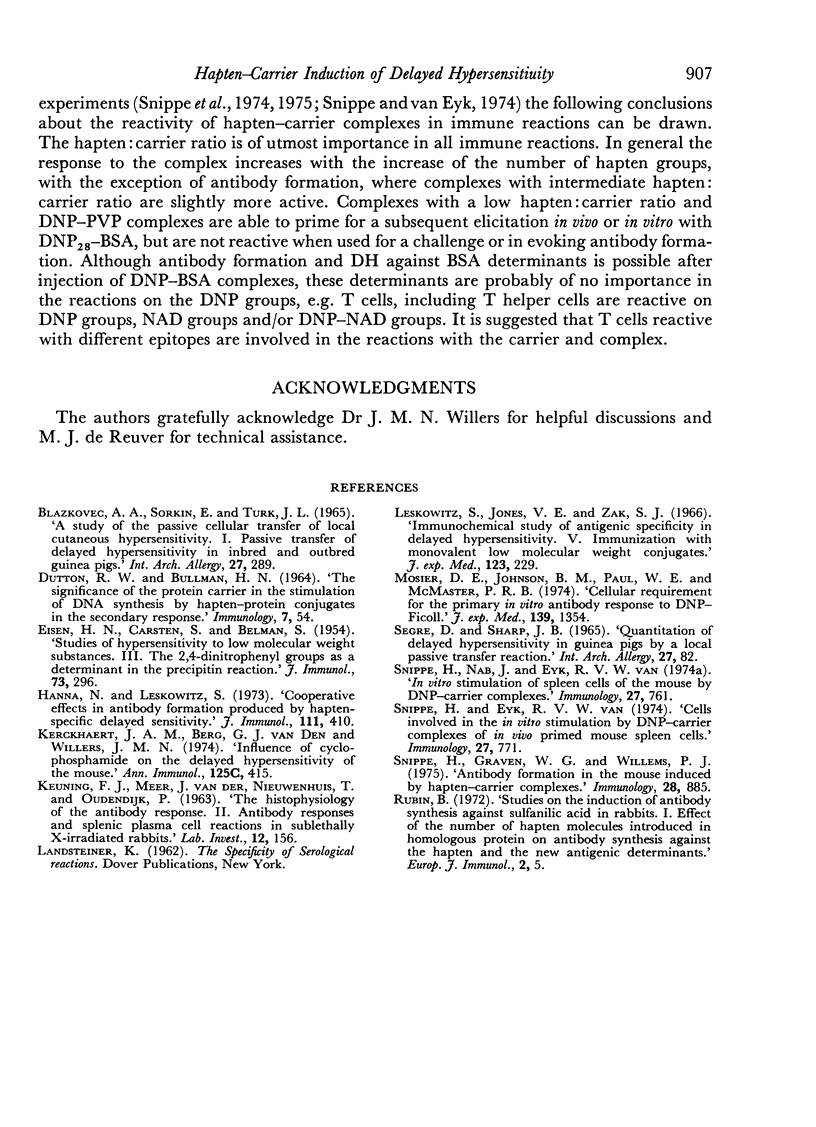
Selected References
These references are in PubMed. This may not be the complete list of references from this article.
- Blazkovec A. A., Sorkin E., Turk J. L. A study of the passive cellular transfer of local cutaneous hypersensitivity. I. Passive transfer of delayed hypersensitivity in inbred and outbred guinea-pigs. Int Arch Allergy Appl Immunol. 1965;27(5):289–303. doi: 10.1159/000229624. [DOI] [PubMed] [Google Scholar]
- DUTTON R. W., BULMAN H. N. THE SIGNIFICANCE OF THE PROTEIN CARRIER IN THE STIMULATION OF DNA SYNTHESIS BY HAPTEN-PROTEIN CONJUGATES IN THE SECONDARY RESPONSE. Immunology. 1964 Jan;7:54–64. [PMC free article] [PubMed] [Google Scholar]
- EISEN H. N., CARSTEN M. E., BELMAN S. Studies of hypersensitivity to low molecular weight substances. III. The 2,4-dinitrophenyl group as a determinant in the preciptin reaction. J Immunol. 1954 Nov;73(5):296–308. [PubMed] [Google Scholar]
- Hanna N., Leskowitz S. Cooperative effects in antibody formation produced by hapten-specific delayed sensitivity. J Immunol. 1973 Aug;111(2):410–415. [PubMed] [Google Scholar]
- KEUNING F. J., van der MEER, NIEUWENHUIS P., OUDENDIJK P. The histophysiology of the antibody response. II. Antibody responses and splenic plasma cell reaction in sublethally x-irradiated rabbits. Lab Invest. 1963 Feb;12:156–170. [PubMed] [Google Scholar]
- Kerckhaert J. A., Van den Berg G. J., Willers J. M. Influence of cyclophosphamide on the delayed hypersensitivity of the mouse. Ann Immunol (Paris) 1974 Mar-Apr;125(3):415–426. [PubMed] [Google Scholar]
- Leskowitz S., Jones V. E., Zak S. J. Immunochemical study of antigenic specificity in delayed hypersensitivity. V. Immunization with monovalent low molecular weight conjugates. J Exp Med. 1966 Feb 1;123(2):229–237. doi: 10.1084/jem.123.2.229. [DOI] [PMC free article] [PubMed] [Google Scholar]
- Mosier D. E., Johnson B. M., Paul W. E., McMaster P. R. Cellular requirements for the primary in vitro antibody response to DNP-ficoll. J Exp Med. 1974 May 1;139(5):1354–1360. doi: 10.1084/jem.139.5.1354. [DOI] [PMC free article] [PubMed] [Google Scholar]
- Rubin B. Studies on the induction of antibody synthesis against sulfanilic acid in rabbits. I. Effect of the number of hapten molecules introduced in homologous protein on antibody synthesis against the hapten and the new antigenic determinants. Eur J Immunol. 1972 Feb;2(1):5–11. doi: 10.1002/eji.1830020103. [DOI] [PubMed] [Google Scholar]
- SEGRE D., SHARP J. B. QUANTITATION OF DELAYED HYPERSENSITIVITY IN GUINEA-PIGS BY A LOCAL PASSIVE TRANSFER REACTION. Int Arch Allergy Appl Immunol. 1965;27:82–101. doi: 10.1159/000229602. [DOI] [PubMed] [Google Scholar]
- Snippe H., Graven W. G., Willems P. J. Antibody formation in the mouse induced by hapten-carrier complexes. Immunology. 1975 May;28(5):885–895. [PMC free article] [PubMed] [Google Scholar]
- Snippe H., Nab J., van Eyk R. V. In vitro stimulation of spleen cells of the mouse by DNP--carrier complexes. Immunology. 1974 Nov;27(5):761–770. [PMC free article] [PubMed] [Google Scholar]
- Snippe H., van Eyk R. V. Cells involved in the in vitro stimulation by DNP-carrier complexes of in vivo primed mouse spleen cells. Immunology. 1974 Nov;27(5):771–779. [PMC free article] [PubMed] [Google Scholar]


